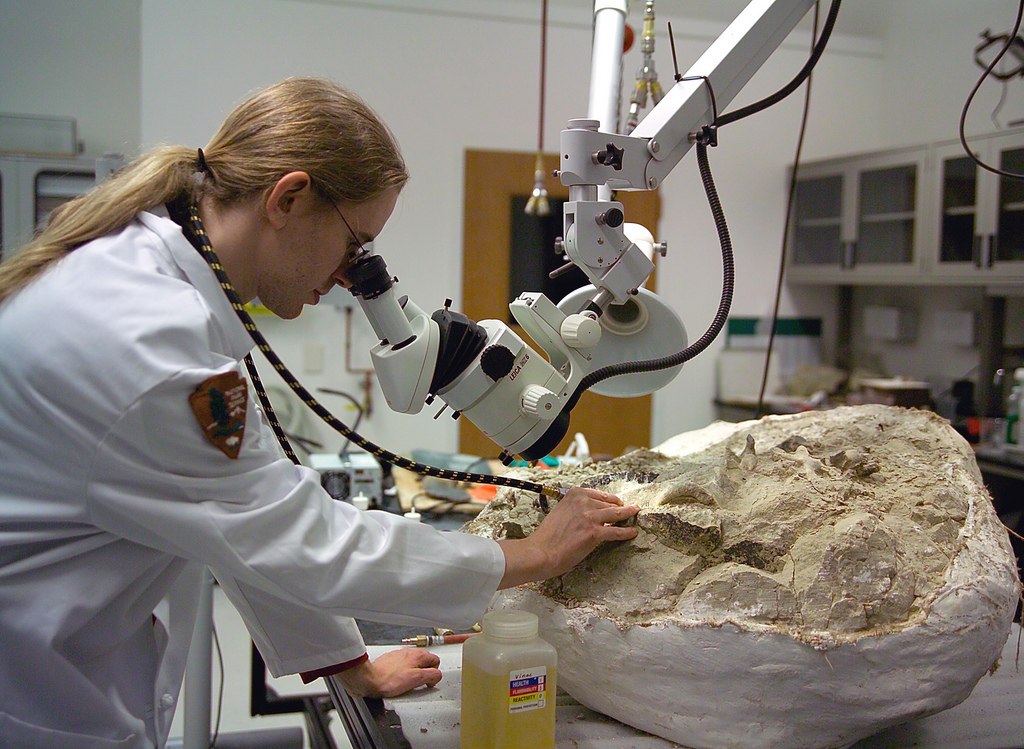The idea of discovering living dinosaurs in remote jungles has captivated human imagination for generations. From Arthur Conan Doyle’s “The Lost World” to the Jurassic Park franchise, the notion persists in popular culture that somewhere, somehow, prehistoric beasts might have survived the extinction event that wiped them out 66 million years ago. This fantasy has inspired countless expeditions into uncharted territories and fueled rumors of mysterious creatures in remote locations. But how scientifically plausible is this scenario? Could pockets of dinosaurs truly exist in unexplored regions of our planet? This article examines the scientific evidence, biological constraints, and ecological realities that address this fascinating question.
The Extinction Event: What Really Happened to the Dinosaurs

The scientific consensus holds that non-avian dinosaurs were eliminated by a catastrophic asteroid impact approximately 66 million years ago, marking the end of the Cretaceous period. This Chicxulub impactor, as it’s known, struck near the Yucatan Peninsula with the force of billions of atomic bombs, triggering global wildfires, tsunamis, and ejecting so much debris into the atmosphere that it blocked sunlight for years. The resulting “impact winter” collapsed food chains worldwide, leading to the extinction of approximately 75% of all species on Earth. Paleontological evidence from the geological record shows a clear boundary layer rich in iridium (an element common in asteroids but rare on Earth) that coincides precisely with the disappearance of dinosaur fossils. This massive extinction event created ecological vacancies that eventually allowed mammals to diversify and dominate, fundamentally reshaping Earth’s evolutionary trajectory.
Dinosaurs Among Us: Birds as Living Dinosaurs

It’s crucial to understand that dinosaurs aren’t actually extinct—they live among us today as birds. Modern birds evolved from a lineage of theropod dinosaurs, specifically small, feathered dromaeosaurs similar to Velociraptor. The scientific evidence for this connection is overwhelming, including shared skeletal features, the presence of feathers in many non-avian dinosaur fossils, and molecular data confirming the relationship. When we ask if dinosaurs could still exist in unexplored jungles, we’re specifically referring to non-avian dinosaurs—the large, iconic species that disappeared at the end of the Cretaceous period. The evolutionary success of birds represents a fascinating continuation of the dinosaur lineage, albeit in a dramatically different form than their larger ancestors. This distinction highlights an important scientific reality: while dinosaurs as a clade persist, the specific types portrayed in popular imagination as hiding in remote jungles did indeed go extinct globally.
The Fossil Record: What It Tells Us About Survival Possibilities

The fossil record provides compelling evidence against the survival of non-avian dinosaurs past the K-Pg extinction boundary. Despite extensive global sampling across all continents, paleontologists have never discovered a single verified dinosaur fossil in rocks dated after the extinction event, with the exception of bird remains. This global pattern cannot be explained by gaps in our knowledge or sampling bias, as it remains consistent across varied ecosystems and geographical regions. If large dinosaur populations had survived, we would expect to find at least some fossil evidence in the 66 million years of geological strata since the asteroid impact. The fossil record also reveals how ecosystems recovered and reorganized after the extinction, showing the radiation of mammals, birds, and reptiles into ecological niches previously occupied by dinosaurs. This comprehensive pattern of evidence strongly contradicts the possibility that significant populations of non-avian dinosaurs survived the extinction event in any region of the world.
Unexplored Regions: How Much of Earth Remains Truly Undiscovered?

In our satellite-mapped world, truly unexplored regions large enough to harbor dinosaur populations are exceedingly rare. While approximately 80% of the ocean remains unmapped and unexplored at high resolution, land areas have been extensively surveyed. The most remote terrestrial regions include parts of the Amazon rainforest, central New Guinea highlands, portions of the Congo Basin, and certain mountainous areas in Southeast Asia. However, even these regions have been subject to aerial surveys, satellite imaging, and limited ground expeditions. Furthermore, the notion of completely isolated ecosystems large enough to support breeding populations of large animals without detection is increasingly implausible. Indigenous peoples have inhabited many supposedly “unexplored” areas for thousands of years, and their traditional knowledge encompasses local wildlife extensively. While small new species are discovered regularly in remote areas, these are typically insects, amphibians, or small mammals—not large vertebrates that would require substantial territory and resources.
Biological Requirements: Could Dinosaurs Sustain a Viable Population?

Maintaining a viable dinosaur population over 66 million years would face insurmountable biological challenges. Conservation biology indicates that a minimum viable population for large vertebrates typically requires at least 500-1,000 individuals to maintain genetic diversity and avoid inbreeding depression. Large dinosaurs would need extensive territories and abundant food resources, making their presence virtually impossible to conceal. For example, a single adult Apatosaurus would require approximately 200-400 kg of plant matter daily, demanding vast feeding grounds. Additionally, breeding populations would need to maintain sufficient genetic diversity to adapt to changing environmental conditions over tens of millions of years. The evolutionary isolation would likely have produced dramatic changes through natural selection, making any surviving lineage unrecognizable compared to their Mesozoic ancestors. Given these constraints, the biological requirements for sustaining a dinosaur population over geological timescales in isolation are scientifically untenable.
Cryptozoology Claims: Analyzing Reports of Living Dinosaurs

Cryptozoological claims of living dinosaurs persist despite lack of scientific validation. The most famous case involves the supposed “mokele-mbembe” of Central Africa’s Congo Basin, described by some as resembling a sauropod dinosaur. Similar claims exist for “burrunjor” in Australia and various lake monsters worldwide. However, these reports consistently lack physical evidence that would satisfy scientific scrutiny—no bones, tissue samples, clear photographs, or other verifiable evidence has been produced. Cryptozoological expeditions searching for these creatures have failed to document their existence despite decades of effort. Anthropological analysis suggests many of these accounts represent cultural interpretations of known animals, misidentifications, or folkloric traditions rather than actual encounters with prehistoric creatures. The pattern of anecdotal claims without corroborating physical evidence follows the typical profile of cryptid reports worldwide, where cultural factors and misperceptions often drive persistent myths rather than biological realities.
Environmental Adaptation: Could Dinosaurs Survive Climate Changes?

For dinosaurs to have survived from the Cretaceous to the present, they would have needed to adapt to dramatic environmental changes far beyond their known adaptability. Since the K-Pg extinction, Earth has experienced multiple major climate shifts, including several ice ages, warming periods, and significant alterations in atmospheric composition. During the Paleocene-Eocene Thermal Maximum around 56 million years ago, global temperatures spiked dramatically, while the more recent Pleistocene ice ages created conditions entirely unlike those of the Mesozoic world. The Mesozoic Era featured significantly higher temperatures, different atmospheric oxygen concentrations, and distinct seasonal patterns compared to the modern world. Non-avian dinosaurs evolved specific physiological adaptations to their Mesozoic environment, including particular respiratory systems and metabolic requirements that may have been maladapted to post-extinction conditions. While dinosaurs as a group showed remarkable adaptability during their 165-million-year reign, the rapidity and severity of post-impact climate changes likely exceeded their capacity for adaptation.
Scientific Expeditions: What Researchers Have Actually Found

Scientific expeditions to remote regions have consistently failed to find evidence of living dinosaurs while successfully documenting numerous other previously unknown species. Modern biological surveys employ sophisticated techniques including environmental DNA sampling, camera traps, aerial surveys, and satellite tracking that would likely detect large vertebrates even in dense habitats. Recent major discoveries in remote areas include the saola (Asian “unicorn”) in Vietnam in 1992, the Kipunji monkey in Tanzania in 2003, and various new species of primates, reptiles, and amphibians. However, these newly discovered vertebrates are typically small to medium-sized and represent modern taxonomic groups, not prehistoric lineages. Scientific expeditions to areas rumored to harbor dinosaur-like creatures, such as Roy Mackal’s Congo expeditions in the 1980s or various expeditions to Papua New Guinea, have yielded interesting ethnozoological information but no physical evidence of surviving dinosaurs. Instead, these scientifically rigorous searches often result in the discovery of new insects, plants, and occasionally small vertebrates that expand our understanding of modern biodiversity.
Ecological Impact: How Would Dinosaurs Affect Modern Ecosystems?

If dinosaurs had somehow survived in isolated regions, their ecological impact would be impossible to conceal. Large dinosaurs would function as keystone species, dramatically altering vegetation structure through herbivory or reshaping prey populations through predation. Such ecological effects create detectable signatures even when the animals themselves remain elusive. For example, large herbivores create distinctive browsing patterns, trampling paths, and dung deposits that transform landscapes. Predators influence prey behavior and population dynamics in ways observable through ecological studies. Modern ecosystems have evolved in the absence of non-avian dinosaurs for 66 million years, developing complex interdependencies among existing species. The ecological niches once occupied by dinosaurs have been filled by mammals, birds, and reptiles. Satellite imagery and remote sensing can detect subtle ecosystem patterns that would reveal the presence of very large animals, even in densely forested regions. The absence of such ecological signatures in any region on Earth provides further evidence against the existence of surviving dinosaur populations.
Evolutionary Divergence: What Would Modern Dinosaurs Look Like?

If non-avian dinosaurs had somehow survived the extinction event in isolation, evolutionary processes would have transformed them dramatically over 66 million years. For comparison, the earliest recognizable elephants appeared only about 55 million years ago, while the common ancestor of humans and chimpanzees lived approximately 7 million years ago. Over the 66-million-year timespan since the extinction event, surviving dinosaur lineages would have undergone extensive adaptive radiation and specialization in response to changing environments. Any purported “living dinosaurs” would likely bear little resemblance to their Mesozoic ancestors due to these evolutionary processes. Selective pressures would favor adaptations suitable for post-Cretaceous conditions rather than preserving prehistoric characteristics. The evolutionary divergence would be so substantial that survivors might not be immediately recognizable as dinosaurs except through detailed anatomical and genetic analysis. This evolutionary reality contradicts the popular notion of discovering dinosaurs that look essentially identical to their fossil counterparts, as depicted in fiction like “The Lost World.”
The Precedent of “Living Fossils”: Could Dinosaurs Be Similar?

Some argue that so-called “living fossils” like coelacanths and horseshoe crabs demonstrate that ancient lineages can persist unchanged, suggesting dinosaurs might similarly endure. However, this comparison misunderstands both the nature of “living fossils” and evolutionary processes. While coelacanths were once thought extinct and rediscovered in 1938, genetic and anatomical studies reveal they have indeed evolved significantly from their fossil ancestors despite superficial similarities. Horseshoe crabs and ginkgo trees maintain ancestral body plans because these adaptations remain well-suited to stable ecological niches they occupy, not because evolution ceased. Additionally, these organisms typically have life history traits that differ markedly from dinosaurs, including aquatic habitats, small population requirements, or extreme longevity. Even the most conservative “living fossils” show genetic changes and adaptations at the molecular level when studied closely. Non-avian dinosaurs, with their large size, substantial resource requirements, and terrestrial habits, would face entirely different evolutionary pressures than typical “living fossil” organisms, making the comparison scientifically inappropriate.
The Cultural Persistence: Why We Want Dinosaurs to Exist

The enduring cultural fascination with discovering living dinosaurs reflects deeper human psychological patterns and cultural needs. The concept represents a perfect intersection of scientific wonder, primal fear, and the human desire to connect with Earth’s distant past in tangible ways. Psychologically, the appeal of living dinosaurs involves what scholars call “the thrill of the impossible”—the emotional rush of imagining something we rationally know cannot exist but emotionally wish could. Cultural analysis suggests this fascination also relates to human ambivalence about our planetary dominance; dinosaurs represent both our vulnerability as mammals who evolved in the shadow of these creatures and our triumph in succeeding them as Earth’s dominant vertebrates. The persistence of dinosaur survival myths across cultures also connects to universal narrative patterns of “hidden worlds” and “lost kingdoms” that appear in folklore globally. From a science communication perspective, this cultural fascination offers valuable opportunities to engage public interest in paleontology, evolution, and conservation biology, even while clarifying the scientific implausibility of the scenario itself.
The Scientific Verdict: What Evidence Would Change the Consensus

The scientific consensus firmly rejects the possibility of non-avian dinosaur survival, but science remains fundamentally open to new evidence. For the consensus to shift, several types of compelling evidence would be required. Most conclusively, physical specimens subject to rigorous analysis would be necessary—including skeletal material, tissue samples for DNA analysis, and detailed anatomical examination by qualified paleontologists. Clear photographic or video documentation showing distinctive dinosaurian features (not explainable as known animals) would constitute preliminary evidence warranting investigation. Indirect evidence like distinctive footprints, feeding patterns, or calls might support claims but wouldn’t be definitive without corroborating physical evidence. Any such evidence would need to withstand multidisciplinary scientific scrutiny, including verification by independent researchers without vested interest in the findings. The current consensus against dinosaur survival isn’t based on dogmatic rejection but on comprehensive absence of supporting evidence despite extensive opportunity for discovery, combined with the overwhelming theoretical arguments against such survival from paleontology, ecology, and evolutionary biology.
Conclusion

The scientific evidence overwhelmingly indicates that non-avian dinosaurs did not survive the Cretaceous-Paleogene extinction event in any form recognizable to us today. While the cultural allure of discovering living dinosaurs remains powerful, the biological, ecological, and evolutionary constraints make such a scenario virtually impossible. The complete absence of fossil evidence across 66 million years, the extensive mapping of Earth’s surface, the ecological requirements of large animal populations, and the inevitable evolutionary changes over geological timescales all argue convincingly against hidden dinosaur enclaves. Nevertheless, the scientific journey to understand dinosaurs continues through paleontological discoveries, and in a very real sense, dinosaurs do still exist—not in remote jungles, but in the birds we see every day. This scientifically accurate perspective doesn’t diminish the wonder of dinosaurs but rather enhances our appreciation for the complex evolutionary history of life on Earth and the remarkable ways that elements of the distant past continue to influence our present world.




